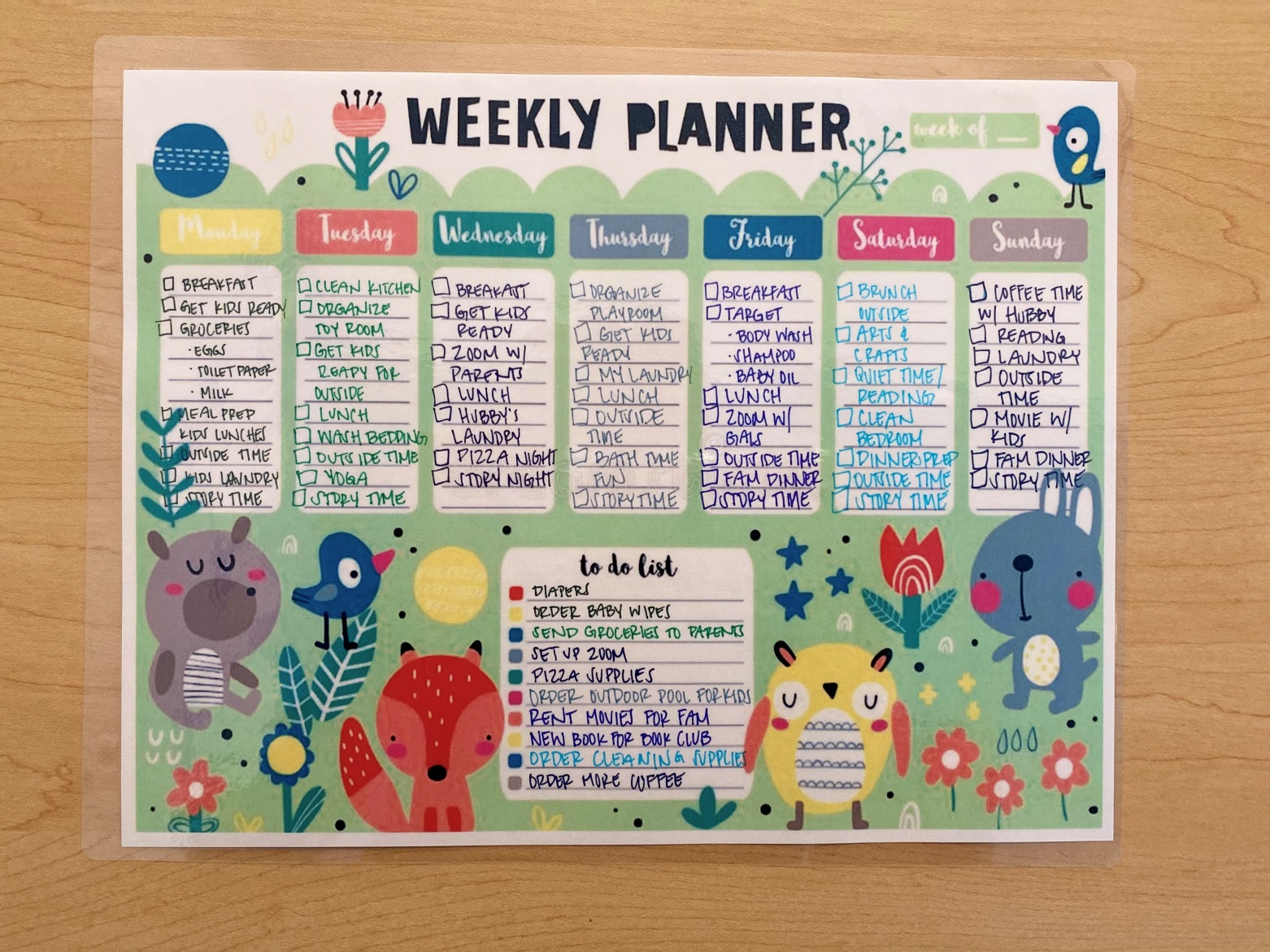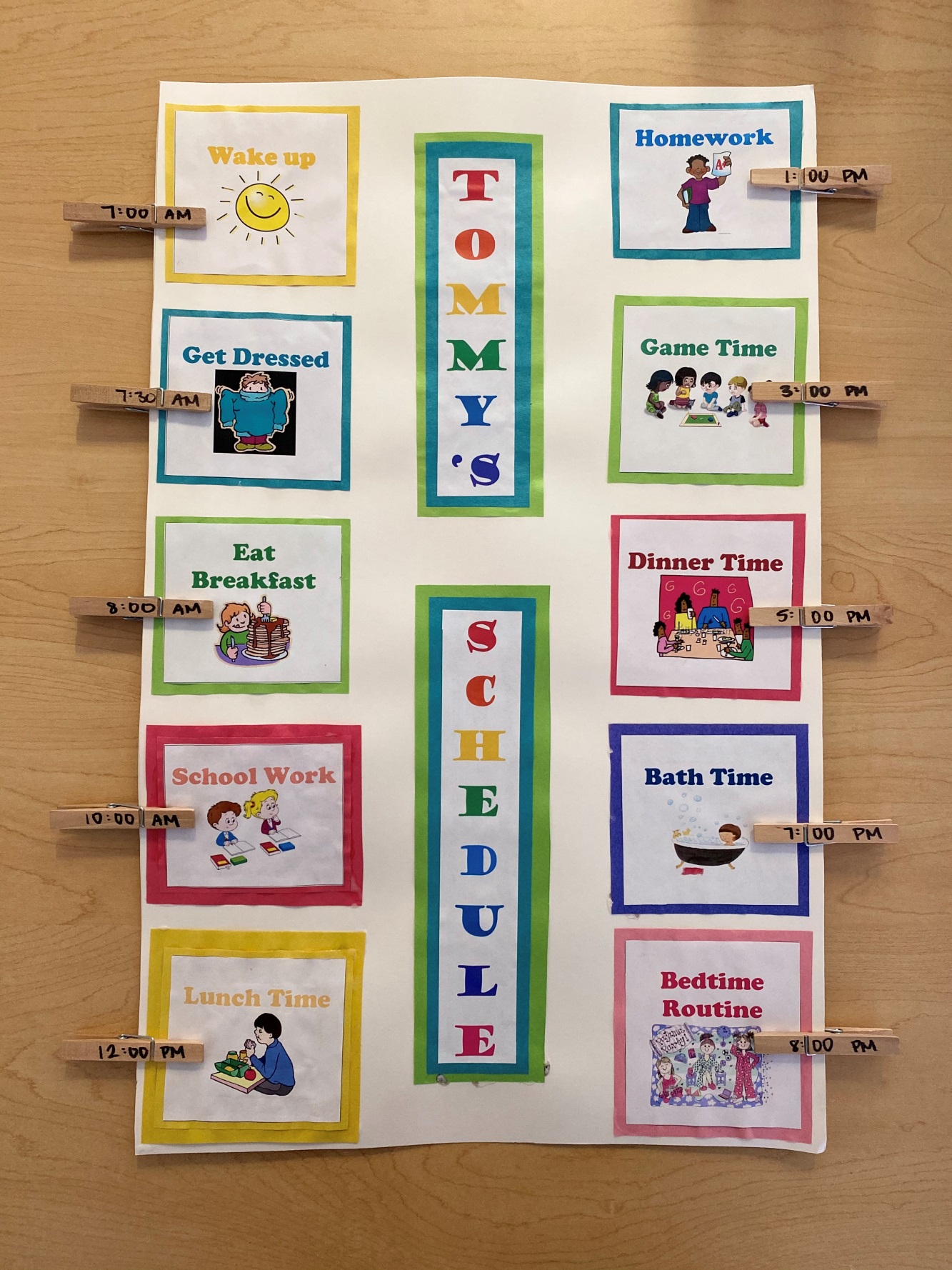by Erin Carpenter, CCLS; Aislinn Mooney, CCLS; and Madeline Zinngrabe, CCLS
It can be challenging to keep a schedule and routine at home during this uncertain time. You may see regressive or withdrawn behavior when your child is trying to adapt and manage their feelings and changes to their routine. Keeping your child’s environment structured and consistent can help them cope with the changes they are experiencing in their daily life. As child life specialists, our daily work at Rady Children’s Hospital-San Diego highlights the importance of normalization in a clinical setting, but much of what we do can be applied to home life, too. Read on for some examples of routines and tips on structuring time at home with your children and teens, and stay tuned for additional Kite Insights posts on staying active, engaged and emotionally sound.
Toddlers
Toddlers need familiar caregivers and consistency in their routine. It’s helpful for parents to create a schedule for the toddler that stays as true to “normal” life as possible. To best support your child, include the same morning and bedtime routine, snack and meal times, and time for quality interactions and play.

Preschool
For preschool-age children, providing age-appropriate choices or tasks can increase their sense of control and feelings of autonomy. For example, try saying, “You can choose between the red pajamas or the blue pajamas tonight” instead of, “Can you get into your PJs now?” For this age, a picture-based schedule is beneficial because it allows your child to participate in a developmentally appropriate way.

School-Age
With younger kids, you can work together to create their schedule, incorporating appropriate choices and incentives that motivate them for privileges. To keep your child engaged in this routine, you can create theme days during the week, such as crazy hair day or superhero day.
For older children, having them create their own schedule and allowing you to modify if needed is a great way to promote independence. To continue a school routine, you can do things such as pack lunches, maintain the same lunch time as regular school and have structured homework time.


Adolescents
For adolescents, consider including some alone time to promote privacy and independence. Opportunities for self-expression and communication with peers can be beneficial for your teen. It can also be supportive to have them choose things during the week to look forward to, such as a movie night or game night.

Children with Autism Spectrum Disorder or Developmental Delays
During this stressful time, children on the autism spectrum or with developmental delays will likely go through an adjustment process. When creating their new schedule, routines that have minimal interruptions can enhance their ability to cope and increase comfort. It’s important to use clear and direct language, visual supports and/or social narratives, such as the first/then sequences below.

Planning Transitions
For all ages, give your child time to prepare for transitions so they know what to expect. Instead of abstract directions such as “just another minute,” use a color clock or visual timer so your child can actually see how much time remains. Try to avoid planning screen time before non-preferred activities. For example, it might be easier to transition your child from screen time to snack rather than transitioning from screen time to an academic task.
Managing Electronics
We know it can be challenging to decrease your kids’ use of technology, especially when sheltering in place. One way to help limit the amount of electronic activity your child is participating in is by making it intentional. For example, choosing one or two virtual experiences (see links below for some of our favorites) allows your child to engage in the electronic device they enjoy, but also creates a start and end. Setting time limits and using electronics as incentive for completion of homework can also be helpful.
Additional Resources
33 Visual Picture Schedules for Home/Daily Routines
Free Printable Charts for Kids and Parents
Schedule, Activity and Task Cards
How to Create a Visual Schedule for Your Family
40+ Printable Daily Routine Cards for Kids
Story Time from Space Library Directory
Virtual Learning and Engagement Tools
Walt Disney World Virtual Rides
Delish Kids + Parents Cooking Class
